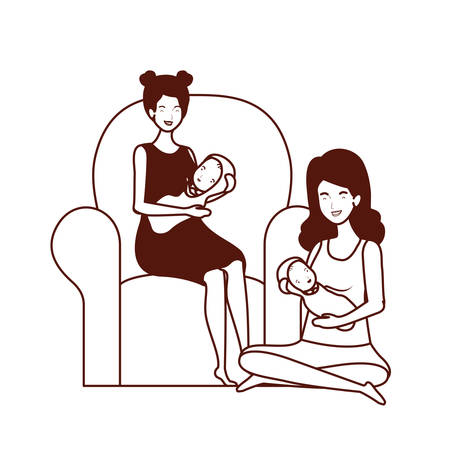1. Introduction to Baby Sign Language
Baby sign language is a way for infants and toddlers to communicate before they can speak. By using simple hand gestures or signs, babies can express their needs, emotions, and thoughts, reducing frustration for both them and their caregivers. This form of early communication has gained significant popularity among parents in the United States due to its benefits in cognitive and language development.
Origins of Baby Sign Language
The concept of baby sign language is rooted in American Sign Language (ASL) and other signing systems used by deaf communities. Researchers in the 1980s began studying how babies could use signs to communicate before developing verbal skills. The results showed that signing not only helped reduce tantrums but also encouraged earlier speech development.
Why Has Baby Sign Language Become Popular?
Many parents and caregivers in the U.S. have embraced baby sign language because it offers a practical way to understand a babys needs before they can talk. Here are some key reasons why it has become widely adopted:
| Reason | Explanation |
|---|---|
| Reduces frustration | Babies can express hunger, tiredness, or discomfort without crying. |
| Encourages bonding | Caretakers become more attuned to a babys thoughts and emotions. |
| Aids language development | Bilingualism studies suggest that using signs strengthens verbal skills later on. |
| Cognitive benefits | Signing stimulates brain development and improves memory recall. |
The Science Behind Baby Sign Language
Studies have shown that babies who use sign language tend to have larger vocabularies at an earlier age compared to non-signing peers. The process of learning signs engages multiple areas of the brain, reinforcing connections that aid future learning. Additionally, children who learn baby sign language often develop stronger problem-solving skills.
A Growing Trend Among Parents
The increasing awareness of child development science has led more parents to explore baby sign language as a tool for early communication. With many resources available, from books to online courses, caregivers find it easier than ever to incorporate signing into daily routines.
2. The Cognitive Benefits of Baby Sign Language
Teaching your baby sign language isn’t just about communication—it also plays a key role in cognitive development. When babies learn to use signs, they engage different areas of their brain, strengthening memory, problem-solving skills, and early communication abilities.
Improved Memory Skills
Using signs helps babies develop better memory retention. When they repeatedly see and use specific gestures, they strengthen neural connections in the brain. This repetitive learning process makes it easier for them to remember words and concepts as they grow.
Enhanced Problem-Solving Abilities
Signing encourages babies to think critically about how to express their needs before they can verbally communicate. When a baby wants something but doesn’t have the words yet, using a sign gives them a tool to solve that problem effectively.
Early Communication Advantages
One of the biggest benefits of baby sign language is that it allows infants to express themselves before they can speak. This reduces frustration and helps them feel understood. Babies who sign often develop spoken language skills earlier because they already understand the concept of communication.
Cognitive Benefits of Baby Sign Language at a Glance
| Cognitive Benefit | Description |
|---|---|
| Memory Development | Repetition of signs strengthens neural pathways, improving recall abilities. |
| Problem-Solving Skills | Babies learn how to communicate needs through gestures before verbal speech develops. |
| Early Language Skills | Signing introduces the concept of communication, helping babies transition to spoken words more easily. |

3. How Sign Language Supports Language Development
Baby sign language can play a crucial role in bridging the gap between a babys understanding and their ability to speak. While infants can comprehend words and concepts before they develop the muscle control needed for speech, signing gives them a way to express themselves earlier. This early communication can help reduce frustration, strengthen parent-child bonding, and even accelerate verbal language development.
How Signing Bridges Understanding and Speech
Babies typically begin to understand language long before they can form words. By introducing sign language, parents give their child a tool to communicate their needs and thoughts without relying solely on spoken words. This process helps reinforce language comprehension while also encouraging verbal skills.
The Connection Between Signing and Verbal Skills
Research suggests that babies who use signs often develop spoken language skills more quickly than those who do not. Signing engages multiple areas of the brain involved in communication, strengthening neural pathways that support both signing and verbal expression.
Key Benefits of Baby Sign Language for Language Development
| Benefit | Description |
|---|---|
| Earlier Communication | Allows babies to express needs before they can speak, reducing frustration. |
| Stronger Vocabulary Growth | Exposes babies to more words and meanings, helping them learn faster. |
| Smoother Transition to Speech | Encourages verbal expression by reinforcing word associations. |
| Cognitive Development Boost | Enhances memory, problem-solving, and overall language comprehension. |
4. Scientific Studies on Baby Sign Language
Over the years, researchers have conducted numerous studies to understand how baby sign language impacts cognitive and linguistic development. These studies reveal that introducing sign language to infants can provide significant benefits in communication, brain function, and early language acquisition.
Key Research Findings
Several scientific studies have shown positive correlations between baby sign language and improved cognitive abilities. Below are some key findings from research conducted in this field:
| Study | Main Findings |
|---|---|
| Acredolo & Goodwyn (2000) | Babies who used signs had larger vocabularies by age two compared to non-signing peers. |
| Kirk, Howlett, Pine, & Fletcher (2013) | Using baby sign language helped improve parent-child interactions and encouraged early speech development. |
| Thompson et al. (2007) | Toddlers exposed to signing demonstrated better problem-solving skills and memory retention. |
Cognitive Benefits of Baby Sign Language
The ability to communicate through gestures before developing verbal skills allows babies to express their needs more effectively. This reduces frustration and enhances overall cognitive growth. Some of the cognitive advantages include:
- Enhanced Memory: Learning signs helps babies retain information better by associating words with physical movements.
- Easier Transition to Verbal Speech: Studies suggest that signing does not delay speech but rather accelerates vocabulary expansion.
- Improved Problem-Solving Skills: Babies who use signs tend to develop stronger reasoning abilities earlier than non-signing infants.
Linguistic Growth and Early Communication
The use of baby sign language has been linked to stronger linguistic skills as children grow older. Some ways it supports early communication include:
- Larger Vocabulary: Children who learned signs as infants tend to have a wider vocabulary by preschool age.
- Bilingual Benefits: Learning signs alongside spoken words can help children acquire multiple languages more easily.
- Easier Expression of Needs: Infants using signs experience fewer tantrums because they can communicate basic needs before speaking fluently.
5. Practical Tips for Teaching Your Baby Sign Language
Introducing baby sign language can be a fun and rewarding experience for both you and your little one. Here are some easy-to-follow strategies to help you get started, along with recommended first signs and ways to incorporate them into daily routines.
Start with Simple and Useful Signs
Begin with a few basic signs that are relevant to your babys everyday needs. Common first signs include:
| Sign | Meaning | How to Do It |
|---|---|---|
| Milk | Indicates wanting milk or nursing | Open and close your hand like youre milking a cow |
| More | Expresses wanting more of something | Touch fingertips of both hands together repeatedly |
| All Done | Signals being finished with food or an activity | Turn both hands outward, palms facing forward |
| Mama/Dada | A way to refer to parents | Tap chin (for “Mama”) or forehead (for “Dada”) with thumb of open hand |
| Eat | Tells you they are hungry | Tap fingers to mouth as if bringing food to lips |
Use Signs Consistently in Daily Routines
The best way to teach baby sign language is through repetition and consistency. Try incorporating signs into these everyday moments:
- Mealtime: Use “eat”, “more”, and “all done”.
- Nursing/Bottle Time: Introduce “milk”.
- Bath Time: Show the sign for “water”.
- Bedding Routine: Use “sleep”.
- Playtime: Sign words related to toys or favorite activities.
Simplify and Be Patient
Your baby may take time to start using signs actively. Keep signing consistently and encourage them by celebrating even small attempts. If they modify a sign slightly, acknowledge it and continue modeling the correct version.
Add Facial Expressions and Verbal Cues
Your tone of voice, facial expressions, and enthusiasm help reinforce meaning. Always say the word aloud while signing so your baby connects the gesture with spoken language.
Create a Fun Learning Environment
- Sit face-to-face with your baby when introducing new signs.
- Songs, books, and interactive games can make learning more engaging.
- Praise their efforts enthusiastically to encourage participation.
The Key Is Repetition and Encouragement!
The more you use baby sign language in daily life, the sooner your baby will pick it up. Stay patient, have fun, and celebrate progress along the way!


